Food in the Gilded Age
Rowman & Littlefield Studies in Food and Gastronomy
General Editor: Ken Albala, Professor of History, University of the Pacific ()
Rowman & Littlefield Executive Editor: Suzanne Staszak-Silva ()
Food studies is a vibrant and thriving field encompassing not only cooking and eating habits but also issues such as health, sustainability, food safety, and animal rights. Scholars in disciplines as diverse as history, anthropology, sociology, literature, and the arts focus on food. The mission of Rowman & Littlefield Studies in Food and Gastronomy is to publish the best in food scholarship, harnessing the energy, ideas, and creativity of a wide array of food writers today. This broad line of food-related titles will range from food history, interdisciplinary food studies monographs, general interest series, and popular trade titles to textbooks for students and budding chefs, scholarly cookbooks, and reference works.
Appetites and Aspirations in Vietnam: Food and Drink in the Long Nineteenth Century , by Erica J. Peters
Three World Cuisines: Italian, Mexican, Chinese , by Ken Albala
Food and Social Media: You Are What You Tweet , by Signe Rousseau
Food and the Novel in Nineteenth-Century America , by Mark McWilliams
Man Bites Dog: Hot Dog Culture in America , by Bruce Kraig and Patty Carroll
A Year in Food and Beer: Recipes and Beer Pairings for Every Season , by Emily Baime and Darin Michaels
Celebraciones Mexicanas: History, Traditions, and Recipes , by Andrea Lawson Gray and Adriana Almazn Lahl
The Food Section: Newspaper Women and the Culinary Community , by Kimberly Wilmot Voss
Small Batch: Pickles, Cheese, Chocolate, Spirits, and the Return of Artisanal Foods , by Suzanne Cope
Food History Almanac: Over 1,300 Years of World Culinary History, Culture, and Social Influence , by Janet Clarkson
Cooking and Eating in Renaissance Italy: From Kitchen to Table , by Katherine A. McIver
Eating Together: Food, Space, and Identity in Malaysia and Singapore, by Jean Duruz and Gaik Cheng Khoo
Nazi Hunger Politics: A History of Food in the Third Reich , by Gesine Gerhard
The Carrot Purple and Other Curious Stories of the Food We Eat , by Joel S. Denker
Food in the Gilded Age: What Ordinary Americans Ate , by Robert Dirks
Food in the Gilded Age
What Ordinary Americans Ate
Robert Dirks
Rowman & Littlefield
Lanham Boulder New York London
Published by Rowman & Littlefield
A wholly owned subsidiary of The Rowman & Littlefield Publishing Group, Inc.
4501 Forbes Boulevard, Suite 200, Lanham, Maryland 20706
www.rowman.com
Unit A, Whitacre Mews, 26-34 Stannary Street, London SE11 4AB
Copyright 2016 by Rowman & Littlefield
All rights reserved . No part of this book may be reproduced in any form or by any electronic or mechanical means, including information storage and retrieval systems, without written permission from the publisher, except by a reviewer who may quote passages in a review.
British Library Cataloguing in Publication Information Available
Library of Congress Cataloging-in-Publication Data
Names: Dirks, Robert, 1942 author.
Title: Food in the Gilded Age : what ordinary Americans ate / Robert Dirks.
Description: Lanham : Rowman & Littlefield, [2016] | Series: Rowman & Littlefield studies in food and gastronomy | Includes bibliographical references and index.
Identifiers: LCCN 2015040482 | ISBN 9781442245136 (cloth : alk. paper)
Subjects: LCSH: DietUnited StatesHistory19th century. | DietUnited StatesHistory20th century. | Food habitsUnited StatesHistory19th century. | Food habitsUnited StatesHistory20th century.
Classification: LCC TX360.U6 D57 2016 | DDC 394.1/20973dc23 LC record available at http://lccn.loc.gov/2015040482
 The paper used in this publication meets the minimum requirements of American National Standard for Information SciencesPermanence of Paper for Printed Library Materials, ANSI/NISO Z39.48-1992.
The paper used in this publication meets the minimum requirements of American National Standard for Information SciencesPermanence of Paper for Printed Library Materials, ANSI/NISO Z39.48-1992.
Printed in the United States of America
Preface
Food consumption or dietary studies have been conducted in the United States for more than one hundred years. The very earliest, carried out by W. O. (Wilbur Olin) Atwater and his colleagues, embodied what was then cutting-edge science. Today that science has been surpassed. Interest in early dietaries these days has more to do with the history of nutrition than with the data the science produced.
That, however, is not the case here. This book revolves around the data. It rests on the conviction that carefully made observations never become outmoded even as the science that produced them develops different methods, novel theories, and new directions. The early accounts of food and eating habits that we find scattered among dusty and forgotten U.S. Department of Agriculture (USDA) bulletins are now of little use to nutritionists. But in the eyes of those curious about the food habits of a bygone era, they will forever represent valuable primary sources offering unusually fine-grained depictions of what Americans ate around the beginning of the twentieth century.
I became conscious of early dietaries and began to appreciate their value at the prompting of Nancy Duran, a librarian and part-time graduate student in history at Illinois State University. She introduced me to the extensive series of food inventories conducted prior to World War I under the auspices of the USDAs Office of Experiment Stations (OES). I read W. O. Atwater and Charles D. Woods Dietary Studies with Reference to the Food of the Negro in Alabama in 1895 and 1896 and came away impressed. Information about the eating habits of ordinary people who lived just four or five generations ago tend to be sketchy at best, but Atwater and Woods described the foods consumed back then in detail. Nancy and I collaborated on a couple of projects. We assembled an extensive bibliography of food consumption studies conducted in the United States prior to World War II. We then used some of the data we located in order to write African American Dietary Patterns at the Beginning of the 20th Century for the Journal of Nutrition . Donald McCormick, editor of the Annual Review of Nutrition , asked me to follow up with an article about the eating habits of other minorities. The idea for this book developed as I wrote that paper.
The Annual Review of Nutrition serves a scientific community. I intend this book for readers interested in history. Nevertheless, I begin the same way I began my review article: by recounting the methods that Atwater and others used to produce their studies. Whether for purposes of science or to obtain historical understandings, we need to be mindful of how information was produced so that we can decide how much stock to put into it. The men and women who conducted the first dietaries were themselves very concerned about the quality of the information they produced. I refer to them as early nutritionists or first-generation nutrition scientists, but in fact there was no science of nutrition at the time. Atwater and his collaborators were chemists. As such, they dedicated themselves to making careful and precise measurements. They took this commitment with them when they left their laboratories to observe food consumption in kitchens, dining rooms, and other mundane settings.
Surveying the results of early dietaries transports us to various parts of the United States during the Gilded Age. This name refers to an era of unprecedented disparity between rich and poor. The eating habits of both groups were, at the time, divided by region and ethnicity and catered to almost entirely by local producers and distributors.
Such was certainly the case in the recently annexed territory of New Mexico, the area I focus on in my introductory chapter. My particular concern here is the Mexican American kitchen, perhaps the most parochial of all American kitchens at the time. My introduction examines it from contrasting perspectives. On the one hand, it looks at the region and its food habits through the lens of ethnology. On the other hand, it relates the point of view of an Atwater-era dietary study. These examples help to distinguish between culinary history and nutrition history and assist in weighing their respective strengths and weaknesses. An account of the techniques and methods of early dietary studies closes out the chapter.
Next page
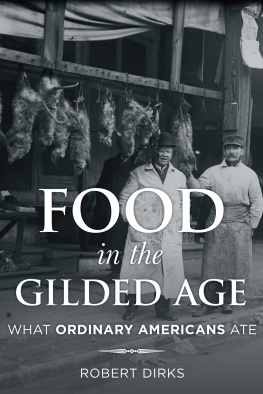
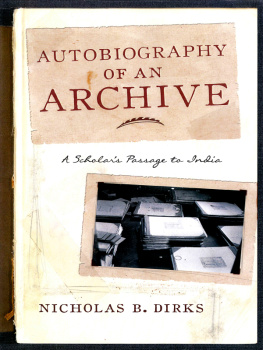
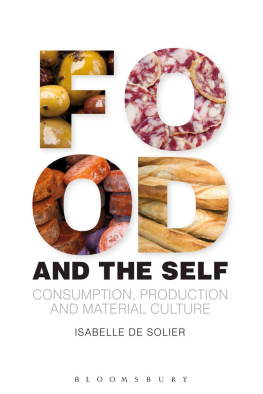

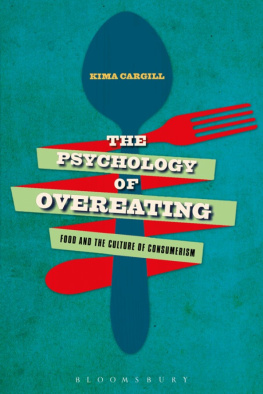
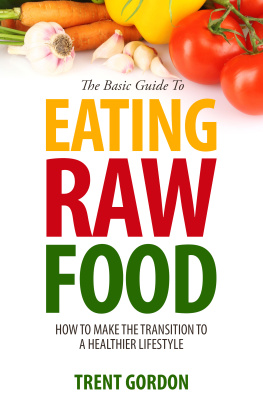
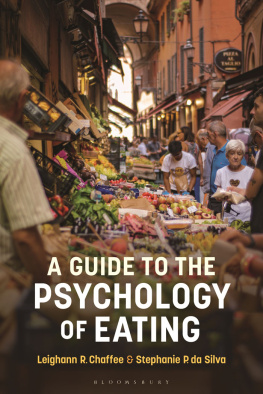
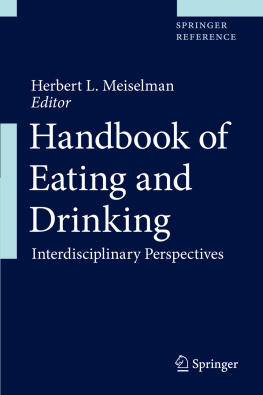
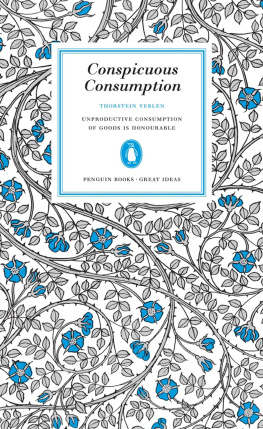
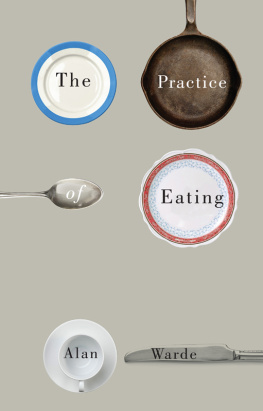
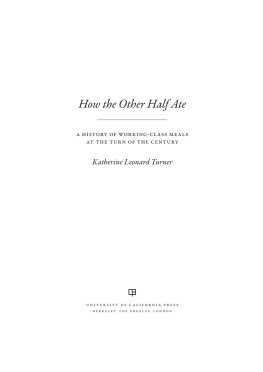
 The paper used in this publication meets the minimum requirements of American National Standard for Information SciencesPermanence of Paper for Printed Library Materials, ANSI/NISO Z39.48-1992.
The paper used in this publication meets the minimum requirements of American National Standard for Information SciencesPermanence of Paper for Printed Library Materials, ANSI/NISO Z39.48-1992.